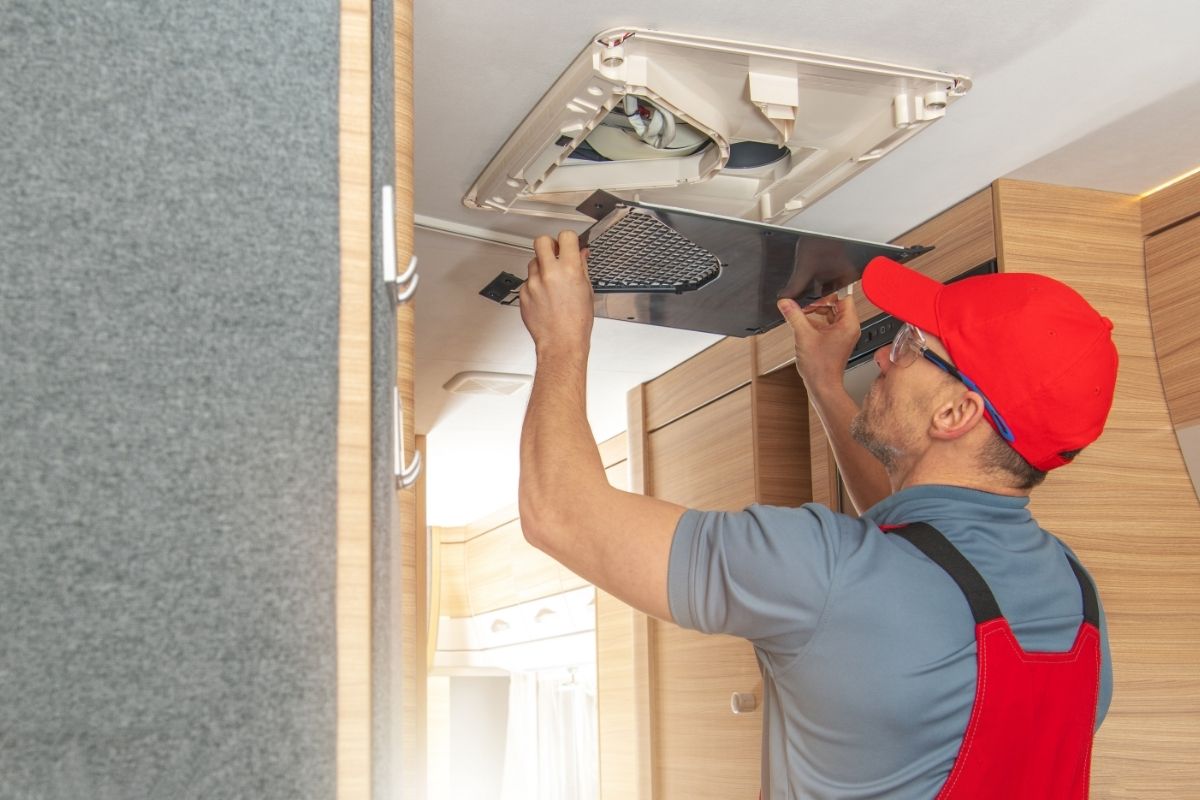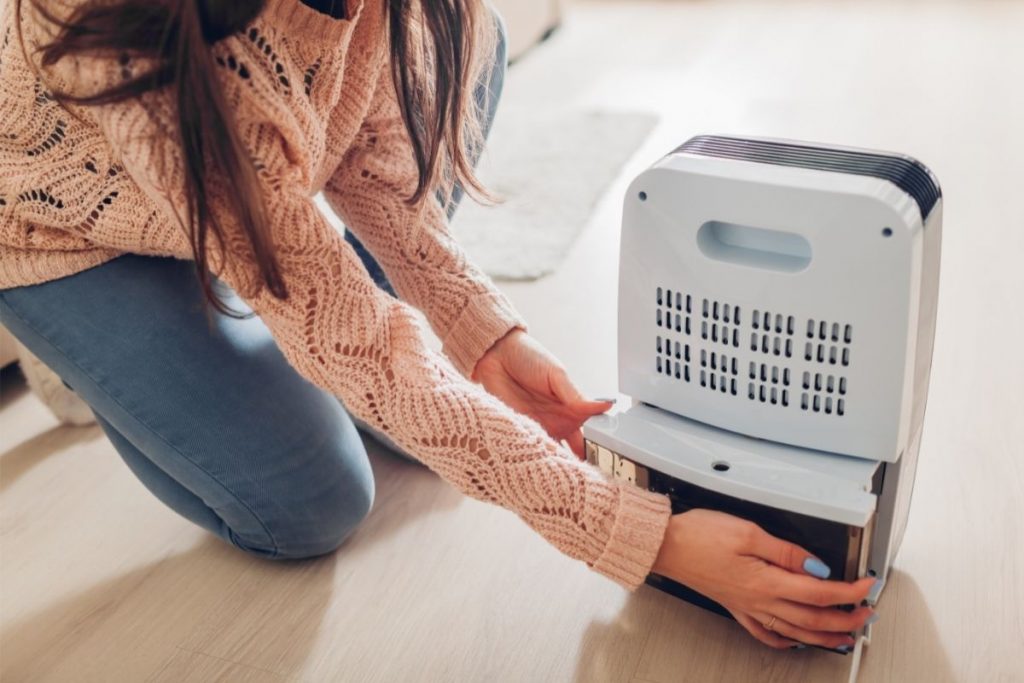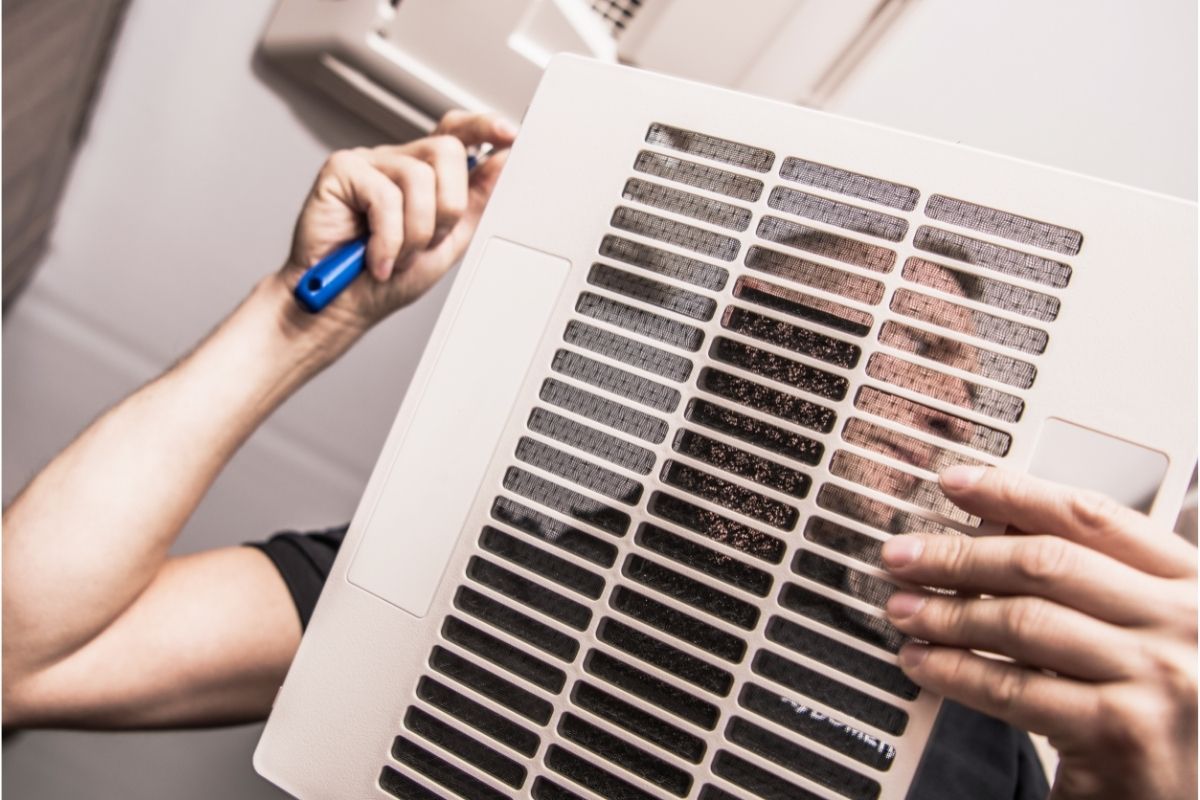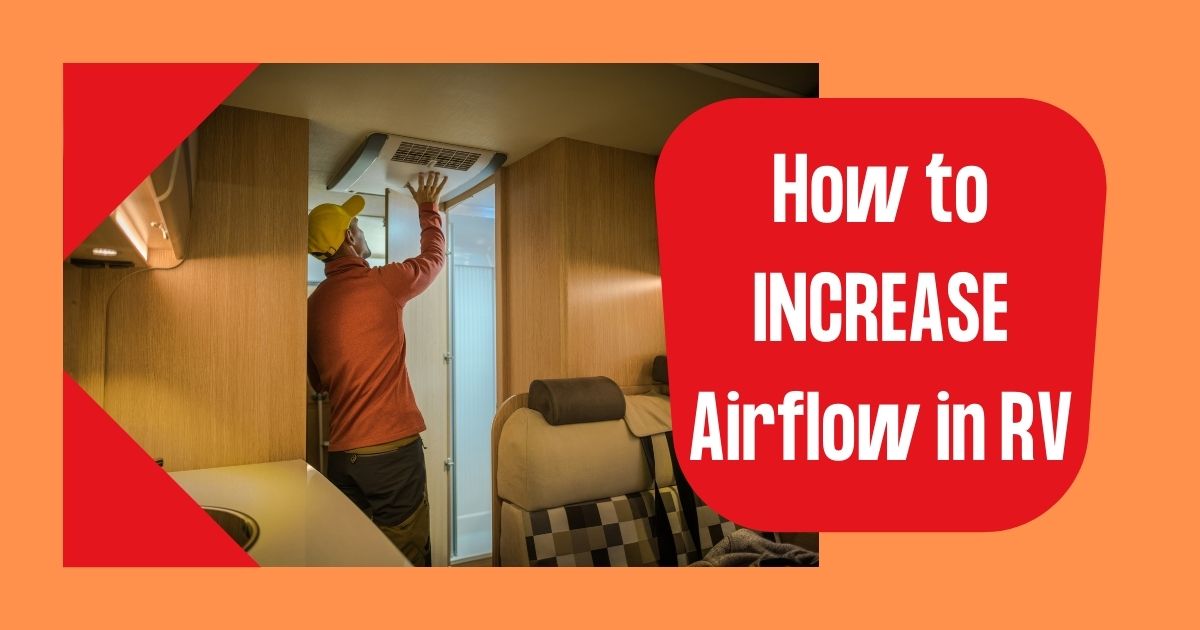This article will help you learn how to increase airflow in an RV so that you can travel safely and comfortably no matter where your travels take you. RVs are an amazing way to travel and see the world. However, one of the main issues RV owners face is getting enough airflow through their units to keep them cool while on the road.
The Importance of Adequate Airflow in an RV
The ventilation in an RV is essential because it allows fresh outside air to come into your home and helps get rid of stale air that’s been inside for a long time. When we are in our RVs, we tend to spend a lot of time breathing the same air over and over again.
Therefore, it’s essential to know how to increase airflow in RV AC to avoid health risks associated with poor ventilation.

How Does the RV Airflow System Work?
Here is how RV airflow systems work. Instead of producing cold air, RV air conditioners remove heat. The RV air conditioning system is closed, unlike the air conditioning in your car or house.
The refrigerant fluids (similar to Freon in cars) are sealed inside the tubing. They circulate heated air from the system and regularly pump cool air into your RV.
The compressor circulates, heats up, and compresses refrigerant vapor inside the air conditioning machine. The vapor will then give off heat in the condenser when pressed to a high enough level.
The condenser gets heat from the air and expels it from the RV. The refrigerant vapors are cooled and converted back to liquid in the condenser to improve the RV air conditioner.
This cool liquid goes through the evaporator, absorbing heat from the hot air within the RV. The air temperature reduces when the hot air washes over the cool evaporator coils. Through the vents, this cool air is blasted back into the RV.
As the refrigerant liquid absorbs heat in the evaporator, it condenses into a vapor, then recycled back into the compressor. Here is how to increase RV AC airflow:
Install a Ceiling Fan
A ceiling fan is an easy and cost-effective way to improve your RV airflow system. The best fans are made for RVs. They’re designed to fit your vehicle’s ceiling perfectly.
These fans don’t require any special wiring or installation skills, but you will need to remove some panels from the roof of your RV. You can remove these panels easily by unscrewing them with a screwdriver.
You may also think about installing a light fixture over the fan to avoid blocking out natural sunlight.
Use a Dehumidifier
If you have a problem with condensation inside your RV, you should invest in a dehumidifier. Dehumidifiers work by getting rid of moisture from the air, which helps prevent mold growth. A dehumidifier will also help keep your RV dryer than if you didn’t use one.

Make Sure Vents are Clear
Vents are essential because they allow warm air to escape from your RV. If too much dust or debris blocks these vents, it could cause poor ventilation problems.
To ensure that everything is working well, check to see any obstructions before leaving on a long trip. If you are trying to find out how to make RV AC more efficient, clean the vents.
Add Insulation
Insulation is another great way to add more warmth to your RV. It keeps heat trapped inside your RV where it belongs instead of allowing it to leak into other parts of your vehicle. Adding insulation to the walls of your RV will also help insulate against cold weather.
Get Rid of Odors
Odors are a result of bacteria that grows in moist areas. One of the biggest culprits of odor-causing bacteria is food left out at room temperature.
When you cook food, you kill off many of these types of bacteria, but you’ll start smelling it again once the food has cooled down. To avoid this problem, store your food in the refrigerator until you plan to eat it.
Clean Regularly
Cleaning your RV airflow systems often will help eliminate smells and keep your RV looking clean. Dusty surfaces can attract dirt and grime, leading to bacteria buildup. Keeping things clean will also help you maintain better indoor air quality.
Replace Filters
RV filters are essential because they filter out airborne particles like pollen, dust, and smoke. Regularly replacing your RV’s filters will help protect your health.
Keep Pets Away
Pets can contribute to bad smells in your RV. If you have dogs or cats, try keeping them outside when you’re not using your RV. Doing this will help reduce the quantity of pet hair floating around in your RV.
Use a HEPA Filter
HEPA means High-Efficiency Particulate Air, and it describes a particular type of filter that removes 99.97% of all particulates from the air. While HEPA filters aren’t cheap, they provide excellent protection against allergens and pollutants.
The Benefits of Increasing Your RV Airflow
Airflow is among the most crucial aspects of RV living. Without it, you could find yourself feeling stiff, stuffy, and overheated. Therefore, it’s necessary to ensure that your RV is well-ventilated, but only if you can do it safely.
If your RV needs a better cooling system, you need to understand why airflow is crucial and get more of it. Here are some benefits of increasing your RV airflow:
It May Help to Increase the Life of Your A/C Components
Reducing air friction is very important to increase the life of your A/C components. There are many ways to reduce air friction, but one of the most effective ways is to replace your standard AC filter with a high-efficiency filter.
A high-efficiency filter, sometimes referred to as a HEPA filter, can help to improve the quality of air inside your home and help to improve the performance of your HVAC system. This filter also reduces particulate matter and fine particles, which helps reduce the wear and tear on your HVAC components.
High-efficiency filters are made from a unique material that allows for higher airflow. It means that your HVAC system will be able to operate at its maximum capacity, which in turn means that you will be able to save money on your energy bills.
This filter will also help reduce the amount of dust and other particles that can get into your RV air duct.
Reduces Condensation Buildup
If you have an RV with a water heater, then you know all too well about condensation. Condensation builds up over time and can cause mold growth and damage your appliances.
The best way to avoid this problem is by installing a dehumidifier or humidifier. These devices eliminate moisture from the air and prevent condensation from forming.
Improves Indoor Air Quality
If you live in an area with a lot of pollen floating around, you should consider investing in a pollen filter. Pollen filters are designed to trap pollen and other allergens before entering the air. In addition, you might want to install a pollen filter if you suffer from allergies.
In addition, pollen filters are great for people who spend a lot of time outdoors. They can help to keep your lungs healthy when you’re outside.
RV Airflow May also Shorten Compressor Cycle Time
When the compressor cycle time is short, it reduces the amount of work the A/C unit has to do. However, if you’ve ever experienced an evaporator freeze-up, then you know just how frustrating it can be.
Evaporator freeze-ups happen because there isn’t enough air going through the coils.
When this happens, the refrigerant becomes trapped between the coil fins and the fan blades. As a result, the fan doesn’t pull enough air across the coils.
The Different Types of RV Air Conditioning
RV air conditioning systems come in two types, split and ducted:
Ducted System
An RV duct air conditioning unit uses a central supply line to bring conditioned air to each room. Ducted systems use a blower that pulls air through the ducts and pushes it into the rooms.
A ducted system is better because it provides greater efficiency. It also offers better airflow and less noise. If you want to enjoy a comfortable stay in your RV, then you should consider installing a ducted system.
If you have an older model RV with a single-speed fan, you can install a ducted system without any problems. However, if you consider buying a new RV or plan on doing some RV ac modifications in your existing unit, you will need to make sure that you buy a ducted system.
Rv airflow systems use variable speed fans that require a ducted system. In addition, some manufacturers offer optional features such as remote controls and thermostats. These options are available only when using a ducted system.
Split System
If you don’t mind having a noisy unit, you can get a split system. Split systems are typically more affordable than ducted units, but they do not provide sufficient cooling power. They also create a lot of dust, which can be very annoying.
Ducted airflow AC units are usually quieter than split systems. They also provide a higher level of cooling power and are much easier to maintain. You can find them in all price ranges.

Conclusion
Increasing your RV airflow is essential to your health. It helps to reduce the risk of getting asthma attacks, sinus infections, and respiratory illnesses. It can also improve your indoor air quality. You can install a fan, dehumidifier, or both to increase the airflow in your RV.
